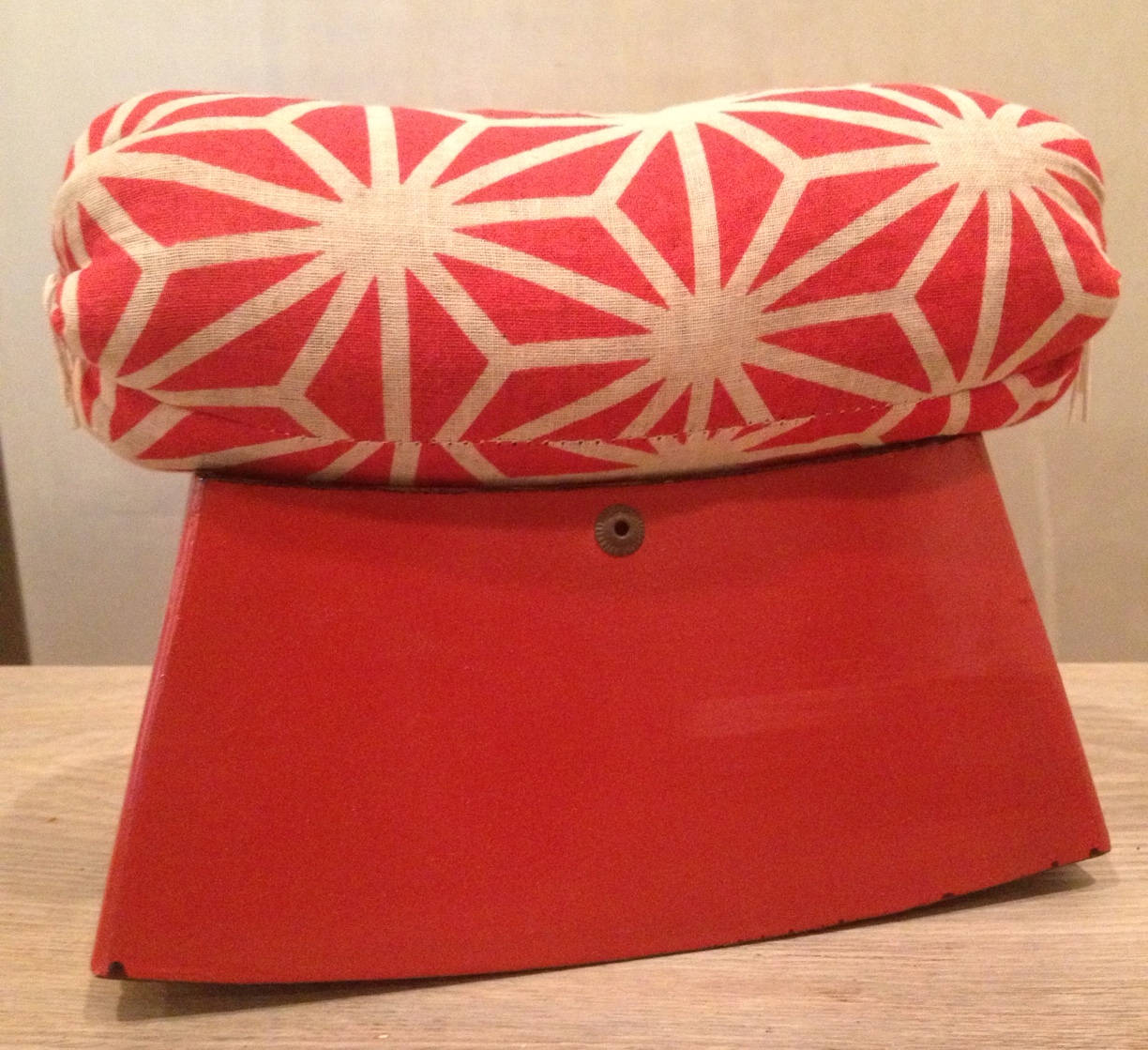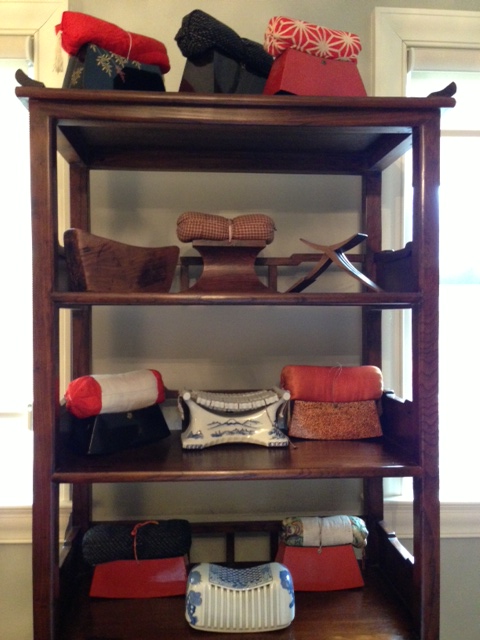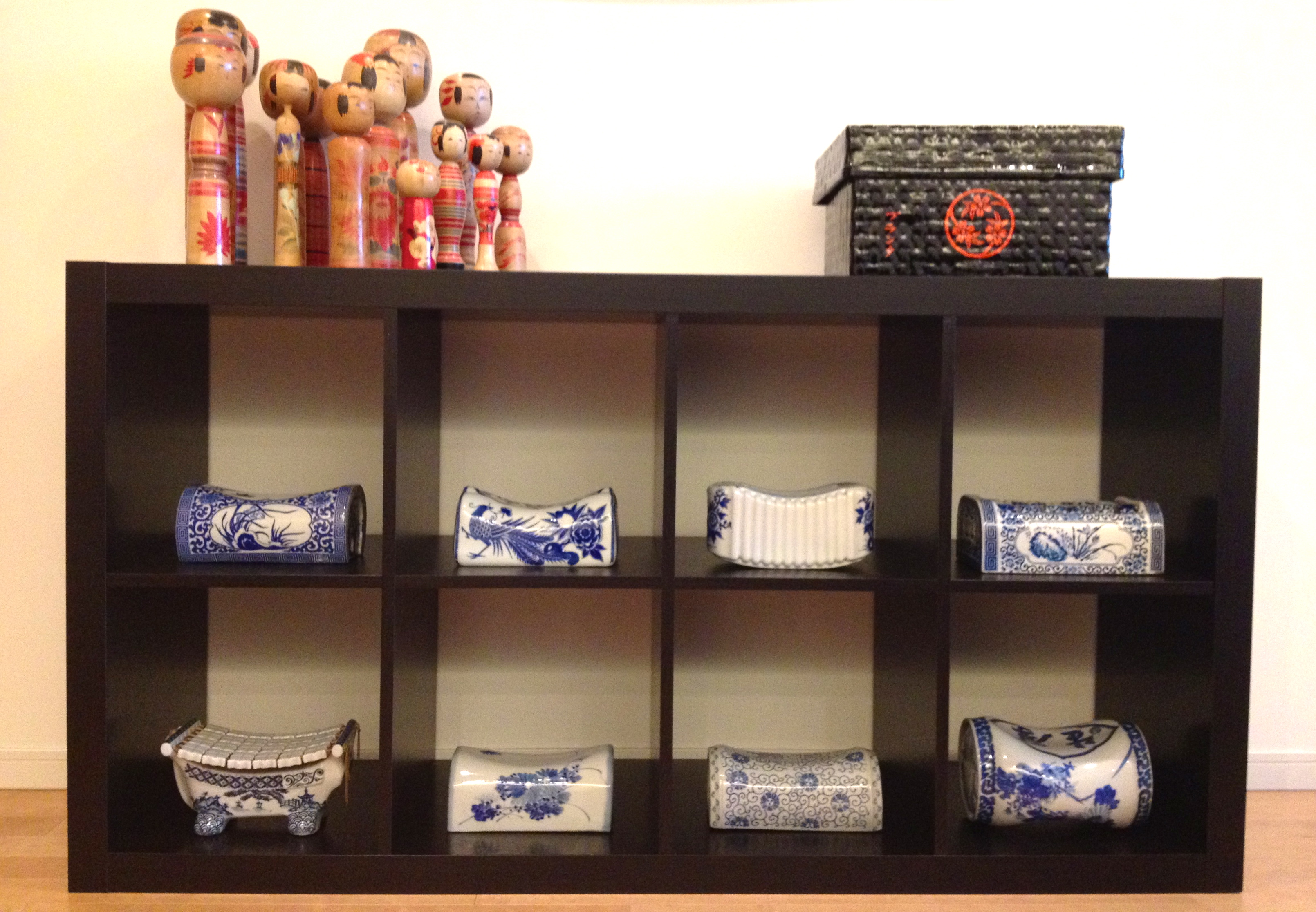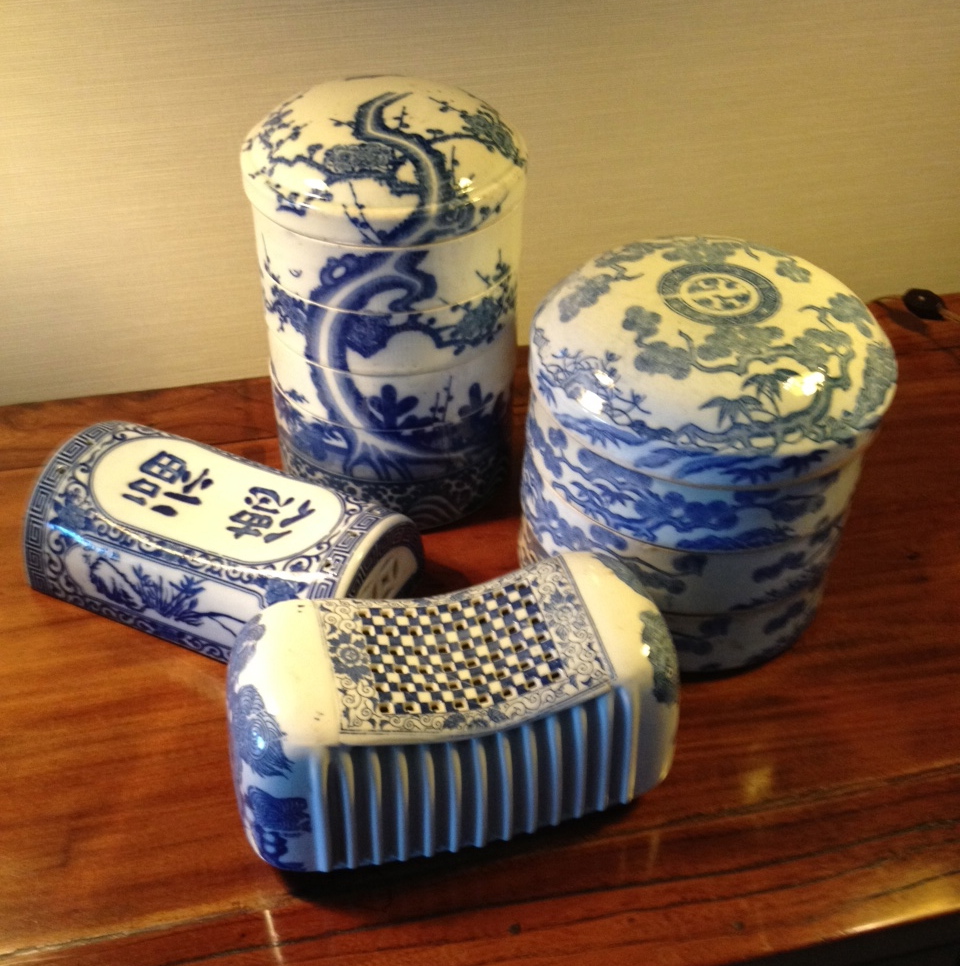“…a young apprentice geisha must learn a new way of sleeping after her hair is styled for the first time. She doesn’t use an ordinary pillow any longer, but a taka-makura-which I’ve mentioned before. It’s not so much a pillow as a cradle for the base of the neck. Most are padded with a bag of wheat chaff, but still they’re not much better than putting your neck on a stone.”
Arthur Golden, Memoirs of a Geisha
It doesn’t sound to me like a very comfortable way to pass the night, but sleeping on a takamakura (tall pillow) was instrumental in preserving the elaborate coiffures worn by geisha.
These days, they make wonderful decorative collectibles, like this one tucked against the books in the side table of a room previously featured in my Provenance column on kasuri over at Cloth & Kind.
The base is made of lacquered wood that is gently curved, to allow for some rocking movement while in use. A silk or cotton-covered pillow, filled with buckwheat hulls or chaff, crowns it and provides some limited comfort. Dark or orangey-red lacquer is most common and sometimes the pillows are made from interesting textiles, like in this case, covered with asa-no-ha (hemp leaf) pattern. And if you are thinking Kelly Wearstler’s Katana, now you know where she got her inspiration!
A similar takamakura rests on the top shelf of a very large collection in a Westchester, NY bedroom. As you can see, most of the geisha pillows are either red or black and the finer ones have detailing in the lacquer. This collection also boasts a few wooden examples as well as some blue & white porcelain ones.
While many of the lacquer and cloth takamakura date from the 19th century, most of the porcelain ones commonly found are early to mid 20th century. The porcelain ones seem even less comfortable to me, although some are designed with special comfort features, like these two. The top one has small porcelain squares strung together almost like a hammock that allow for movement. The one with the kanji marking on top can accommodate hot water and/or medicines in its hollow cavity and the gaps in the top of the pillow let the steam or aroma rise. I’ve actually seen takamakura with pharmacy labels or stamps.
Regardless of their functionality, they are supremely decorative and look great mixed with books in shelves or on their own…
…or combined with other porcelain pieces like these jubako here in a Tokyo entryway…
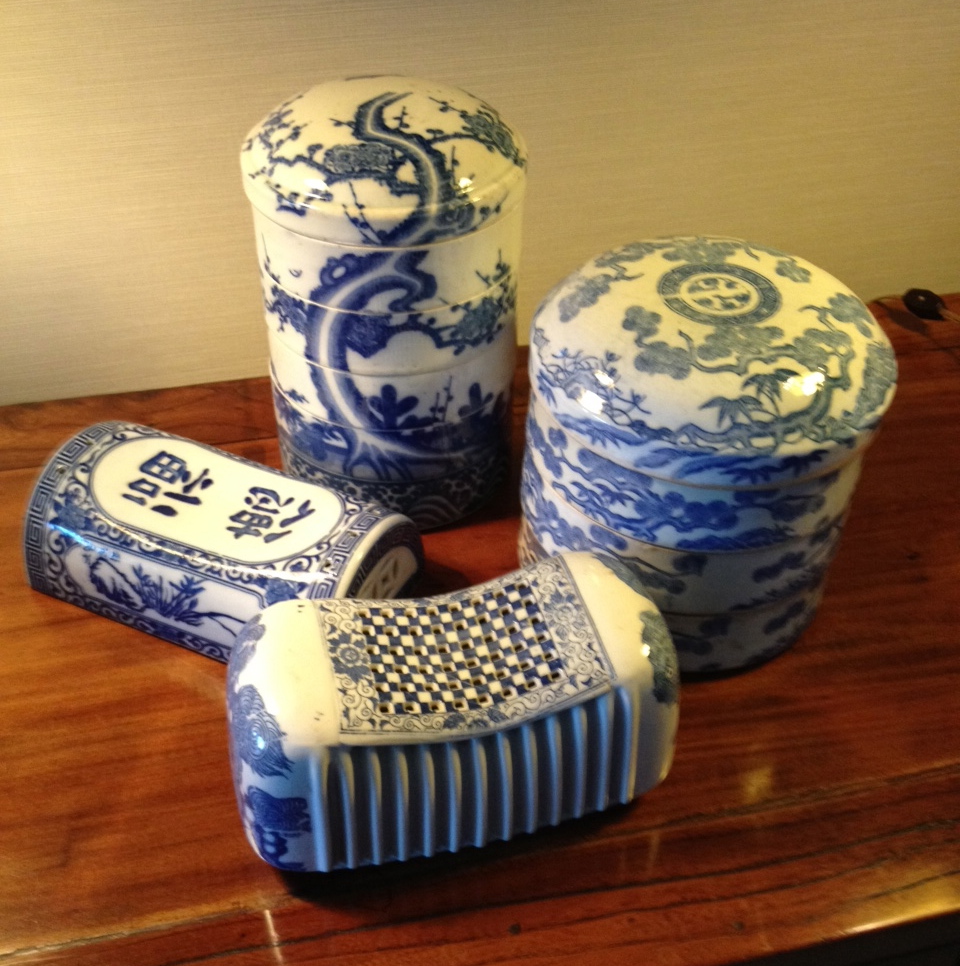
…or here in a cubbyhole in a girl’s bedroom in San Francisco.
She should be happy they rest on a shelf and that she does not rest on one of them!
N.B. You’ll notice repeats in these photos, but it is not a styling trick. All of these takamakura belong to different people, it’s just that many models were produced on a large-scale. Hand painted ones tend to be older and more individual than the inban, or transferware, versions.
Vintage geisha photo, most probably by T. Enami via Geisha Moments Facebook page. Thanks to everyone else who provided photos for this post.



